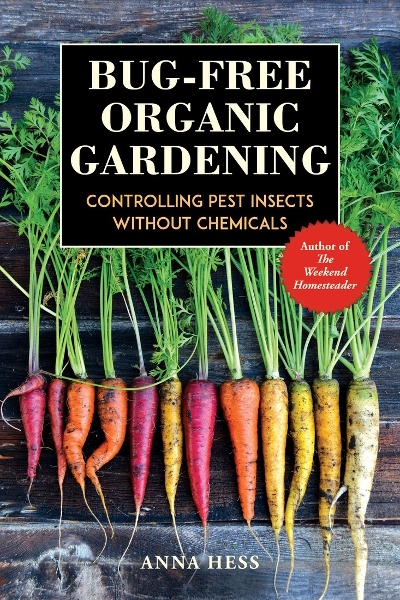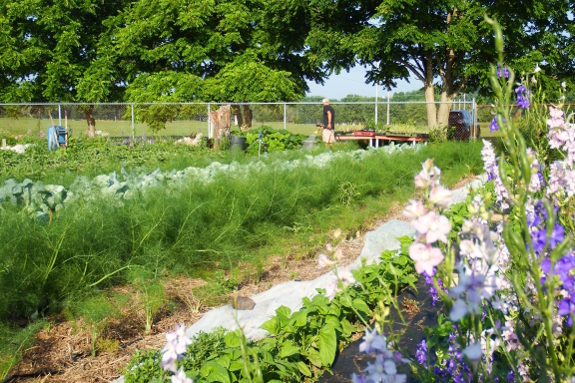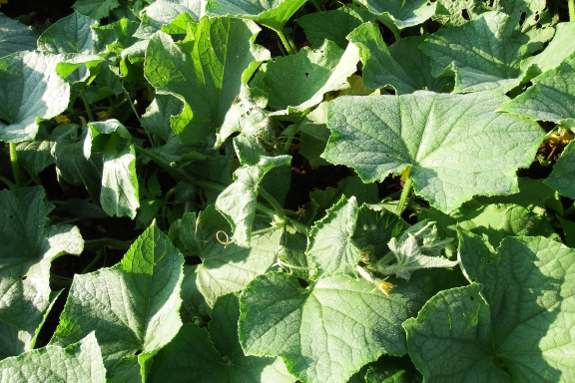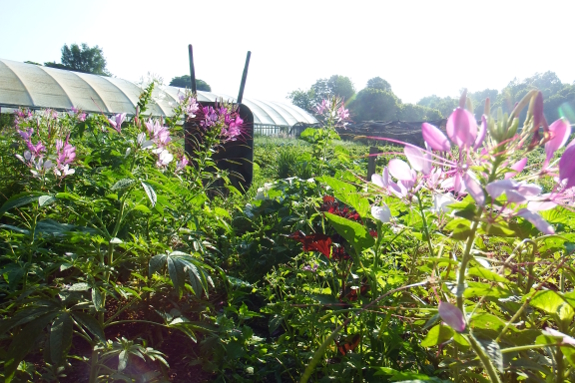
A new organic bug book
 It's time to admit it ---
I've been holding out on you! I have a new book coming out on April
2...or do I?
It's time to admit it ---
I've been holding out on you! I have a new book coming out on April
2...or do I?
Bug-Free Organic Gardening is
actually the third edition of The Naturally Bug-Free Garden, with 25%
additional content rounding out the hands-on portion of the book. Which
means that if you purchased one of the previous editions in ebook-form
from Amazon, you should be able to get the updated version for free. I
couldn't get Customer Service to push out the update automatically, but
if you contact support they can hook you up with the new book file.
You can also nab a paperbook copy now to ship once the book goes live.
(It's currently 31% off on Amazon!) Or you can borrow a copy for free
via your Kindle Unlimited or Prime subscription.
And now, without further ado, one of the new sections, an interview of
Ohio University's professor Arthur Trese:

While the permaculture technique of building a bug-resistant ecosystem
is inherently appealing, most gardeners will occasionally be forced to
lower their standards if they hope to harvest an abundant crop.
Scientists have a name for this process of aiming for the stars but
accepting reality when necessary—integrated pest management (or IPM for
short). In a nutshell, IPM involves understanding how pest insects fit
into the ecosystem, using preventative measures like row covers and
hand-picking when possible, then hitting population explosions with the
lowest levels of effective insecticides when all else fails.
Dr. Arthur Trese of Ohio University's Learning Garden in Athens, Ohio,
is a farmer well versed in IPM. He and a small cadre of enthusiastic
interns run this 1.5-acre fruit and vegetable plot using vast
quantities of elbow grease. Still, there are only so many hours in the
day. So they have to work smart to harvest sufficient produce for
twice-weekly sales to students, faculty, and members of the broader
community.
To that end, Trese and his interns utilize a vast variety of
pest-control methods, beginning with smart plantings meant to overcome
invasions before they start. For example, summer squashes are set out
successionally throughout the season, with older plants quickly
transitioning from productive members of the garden community into
traps for squash vine borers. Insects lay their eggs on
first-generation stems, those vines are removed, then younger plants
are left pristine.

Cucumber beetles are a bit trickier since this smaller pest hits the OU
garden both hard and fast. To counteract the inevitable invasion, Trese
begins with row covers when the plants are young, adding in the organic
insecticide spinosad when pest populations start to soar. "We first
used Bt in our garden," Trese notes. "But Bt only works on
caterpillars. Spinosad is more broad-spectrum and is the only
insecticide we currently use on our crops."
Trese has looked into chemical-free alternatives for the pesky cucumber
beetles, mentioning pheromone traps that have recently come onto the
market. "But traps are expensive," he notes as he pulls out a cucumber
vine that succumbed to bacterial wilt borne by the small, yellow
beetles. A pragmatist, he understands that sometimes it's better to
accept a certain level of losses than to spend more than you earn
battling bugs.

Pragmatism doesn't prevent Trese from focusing on the ecosystem,
however. His garden is full of flowers that attract pollinators and act
as trap crops to condense problematic insects into one spot. Meanwhile,
parasitic wasps are his slow-but-sure solution to cabbageworms on
broccoli. "Wasp populations build naturally over the course of the
season," Trese notes. "By fall, 80% of the caterpillars on broccoli are
affected...but the cabbageworms keep eating anyway."
The caterpillars may eat, but the community does too. And after over a
decade managing a garden that produces bags and barrels and bins of
produce every week, Trese's integrated approach to pest control has
clearly paid off. All it took was a few patches of flowers...and a lot
of elbow grease.
Want more in-depth information? Browse through our books.
Or explore more posts by date or by subject.
About us: Anna Hess and Mark Hamilton spent over a decade living self-sufficiently in the mountains of Virginia before moving north to start over from scratch in the foothills of Ohio. They've experimented with permaculture, no-till gardening, trailersteading, home-based microbusinesses and much more, writing about their adventures in both blogs and books.
Want to be notified when new comments are posted on this page? Click on the RSS button after you add a comment to subscribe to the comment feed, or simply check the box beside "email replies to me" while writing your comment.
